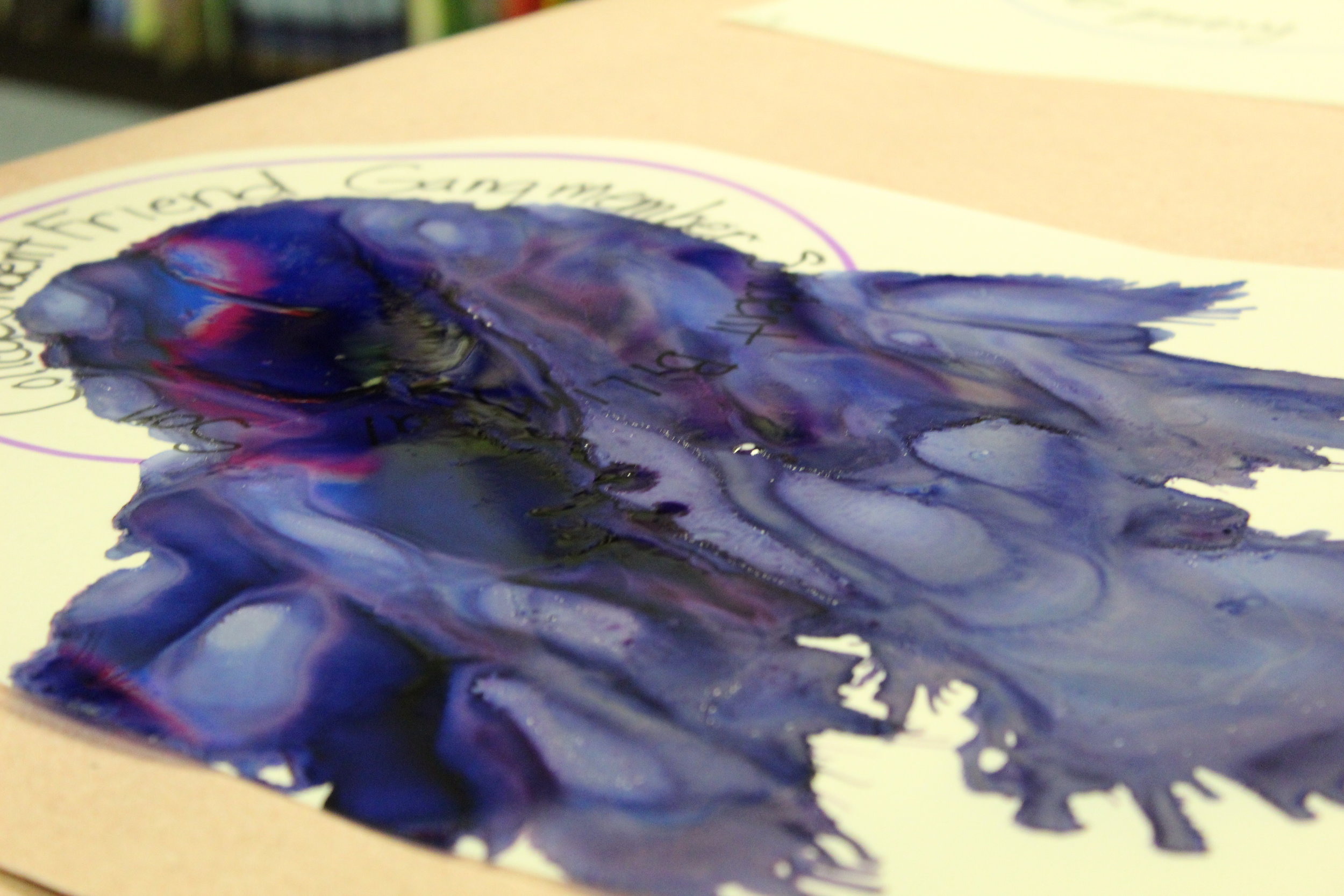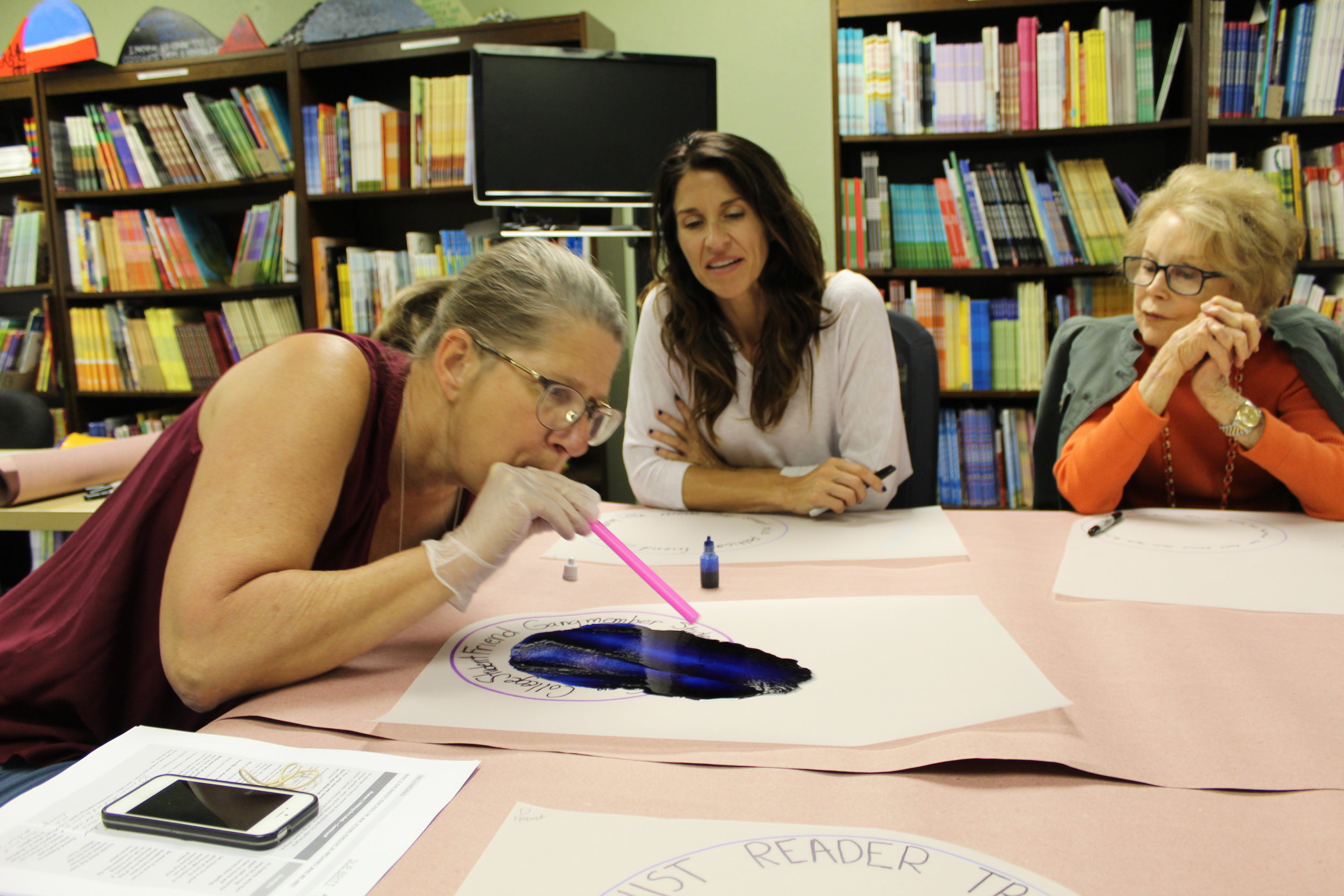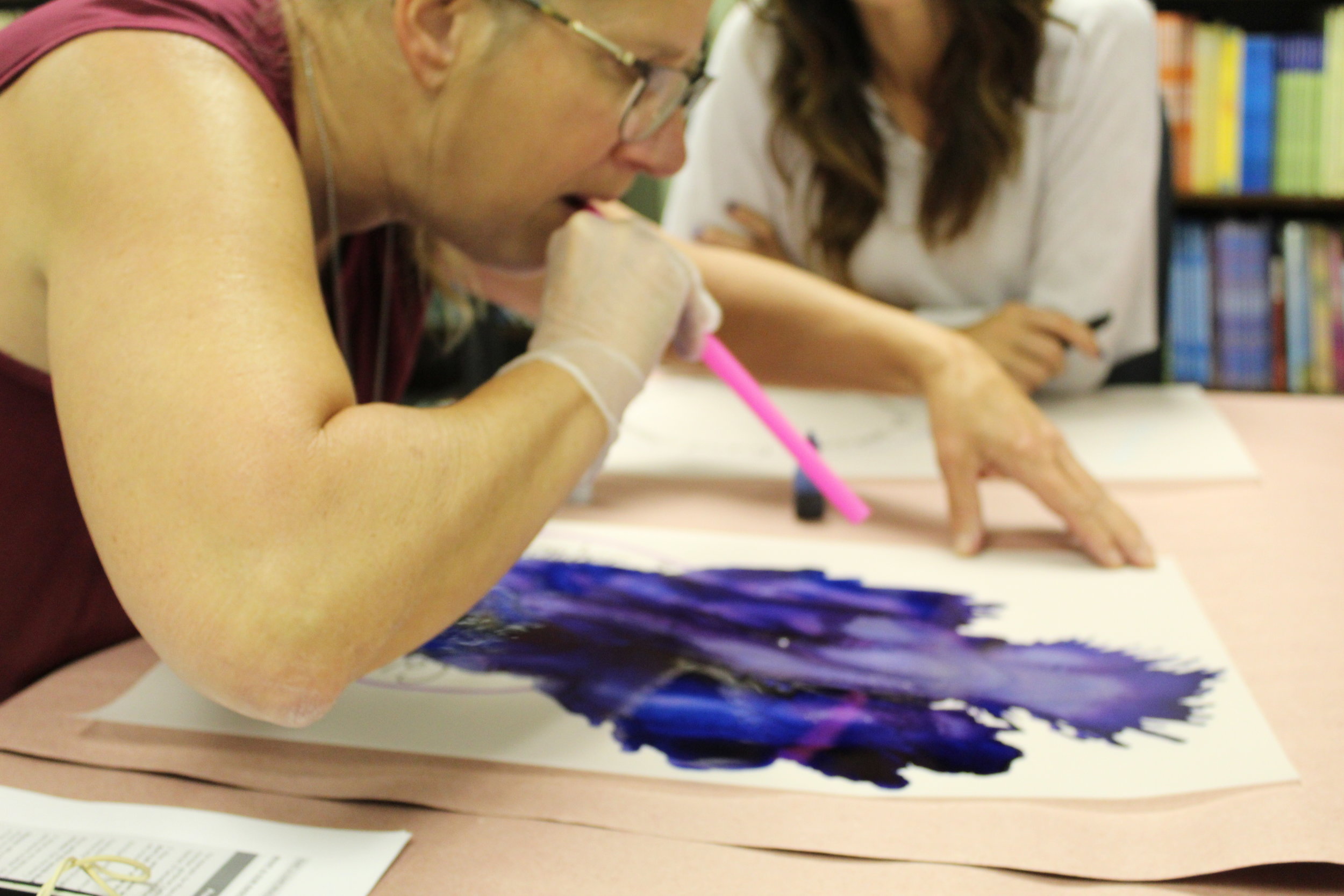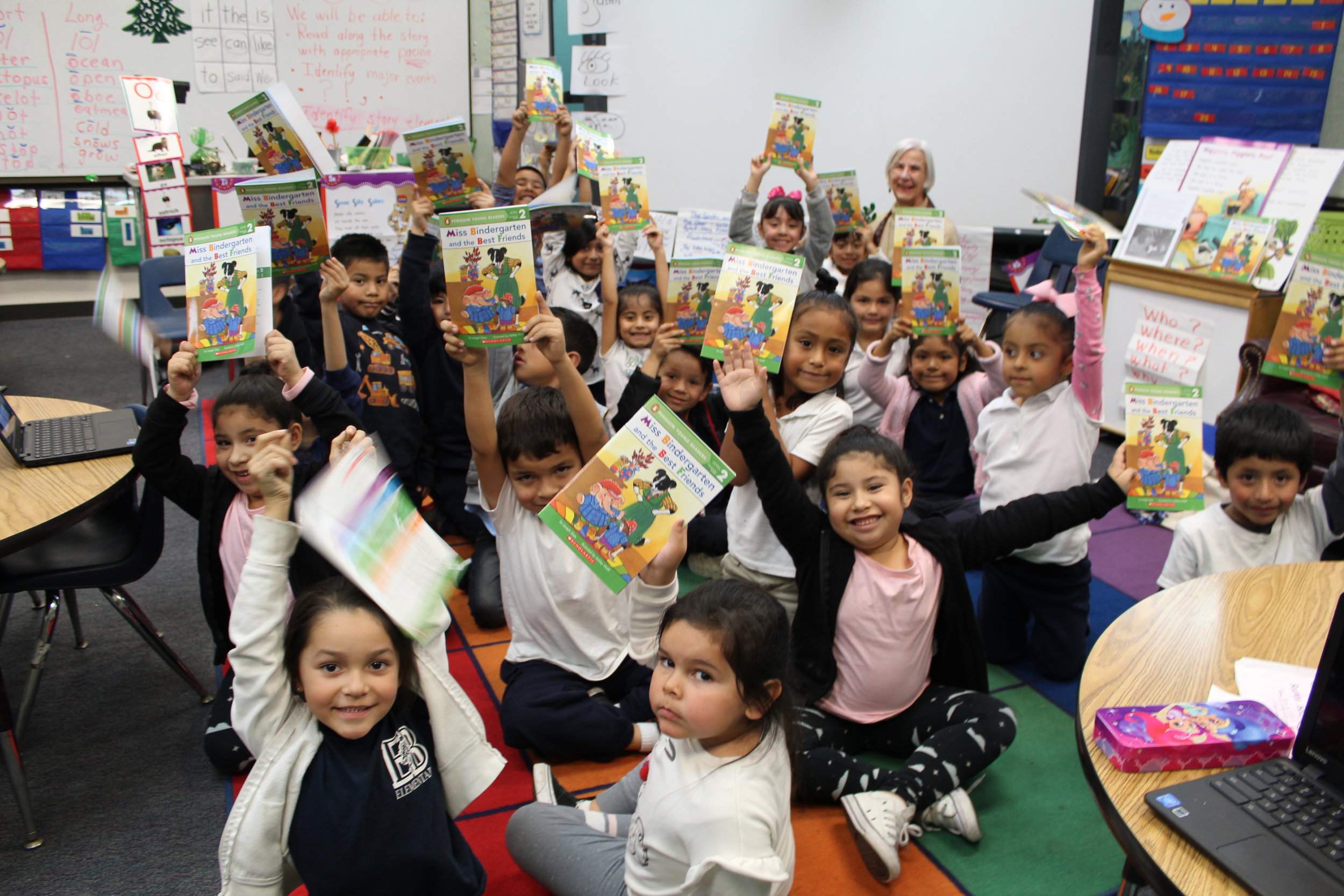At Words Alive, we believe that reading becomes truly exciting, joyful and inspiring to young people when they see how words on a page can relate to their own lives and even transform into something new.
Once a year, we work to bring books alive in a different way for our ABG students by welcoming them to participate in our Art & Lit Project. ABG students participate in a program-wide project that enhances the reading experience and encourages them to think critically about themes in the book and their own environment – all while having fun and creating their very own piece of art.
Words Alive's Adolescent Book Group brings books alive for teenagers facing extraordinary circumstances such as homelessness, violence, teen pregnancy and impact by the justice system. Trained Words Alive facilitators deliver a Common Core-aligned curriculum of hands-on projects, creative writing exercises and discussion prompts specifically designed to spark students’ love of reading, enhance critical thinking skills and boost self-esteem.
About the Book
This year’s project, called "The Radius of All of Us" is a response to The Radius of Us by Marie Marquardt.
Ninety seconds can change a life — not just daily routine, but who you are as a person. Gretchen Asher knows this, because that’s how long a stranger held her body to the ground.
Ninety seconds can change a life — not just the place you live, but the person others think you are. Phoenix Flores-Flores knows this, because months after setting off toward the U.S. / Mexico border in search of safety for his brother, he finally walked out of detention.
Ninety seconds can change a life — so how will the ninety seconds of Gretchen and Phoenix’s first encounter change theirs?
Through working on this project, students will connect the novel to their world by exploring themes of perception and transformation while grappling with the complex issues of trauma and immigration.
About the Art
This thought-provoking work, designed by community artist Sue Britt, showcases the deep ways in which students can connect literature to art, themselves and the world.
The characters in the The Radius of Us perceive and are perceived in ways that evolve as their stories and personalities are better known to others. Perceptions and the words we use to describe other people and ourselves create the radius of each of us; each word forming a boundary of limitations.
Words around the circle represent labels that are placed on the student by others or themselves.
But as we trust enough to share our inner selves, our circle can expand and be blown wide open; although, as realized through literally blowing alcohol ink across the page with a straw, breaking these boundaries can be a challenging process with unexpected results. And still, the words that make up our circle do not go away but remain part of our transformed selves.
Relationships are represented in the work through each drop of ink within the circle. Initially, each drop forms a hard edge, but as drops collide and interact with one another, they change shape and color to symbolize the ways our relationships with others affect who we are. Behind each work, a transparent color reflects the light we shine on those around us.
Each student’s radius, created on translucent paper, comes together with their peers’ work to form a phoenix – a mythological bird reborn from its ashes – a symbol of how trust and sharing with others can lead to personal growth and transformation.
To see the culmination of our students’ work, and the final phoenixes, join us for a reception from 6 to 8 p.m. Wednesday, June 5th at the San Diego Art Institute, 1439 El Prado in San Diego. RSVP for the event here.
In conjunction with this project, and in partnership with Jewish Family Service, we are collecting donations of new socks and underwear for Jewish Family Service’s new shelter for asylum seekers. Please donate new socks and underwear for children in all sizes and for adults in size small. Bring items to the Words Alive office through June 5 or to the exhibition at San Diego Art Institute.





















